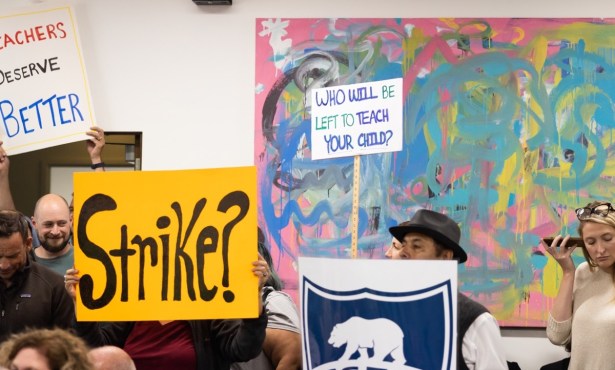Teachers Union and School District Struggle to Mitigate Sacramento Woes
How S.B.'s Board of Education is Dealing with the State Budget Mess

It is a classic hurry-up-and-wait situation with one major distinction: The education of our children hangs in the balance. Early last month, the Santa Barbara School District’s Board of Education bravely approved a budget for the upcoming fiscal year — a multi-faceted bit of worst-case scenario financial wrangling that looked to translate the scorched-earth situation in Sacramento to our area K-12 institutions well ahead of the typical deadlines for such bookkeeping.
Its members had to come up with some $10 million from a general fund that had been hacked heavily in recent years, and they did it by, among other things, sending out more than 200 pink slips, applying to unify the elementary and secondary districts (a relatively benign maneuver that could save them upward of $6 million), and tentatively approving a simultaneous shortening of the school year and lengthening of the school day. The latter, however, requires the sign-off from both the Santa Barbara Teachers Association and the California School Employees Association to become a reality, and, after more than a month of negotiations, that sign-off has yet to materialize. “Unfortunately, it looks like negotiations might continue well into next month,” said Superintendent Brian Sarvis earlier this week, before adding cryptically, “and if we aren’t successful, the board is expecting to come back and have to look at more position cuts.”
Though the specifics of the negotiations are a strictly confidential matter and, as such, all parties involved are tight-lipped about any potential progress or stumbling blocks, it doesn’t take much to speculate where exactly the heavy horse-trading needs to be done. Fundamental to the board’s approved budget is the plan to have as many as 10 unpaid furlough days in the school year ahead for district employees, something that would equal a school year that was five days shorter (though each day would be stretched out by 15 minutes) and an across-the-board pay cut of 5.4 percent. (In real-world terms, this would equal roughly $2,500-$5,000 less a year for certificated employees). Pay cuts are never popular, but when you take into account that Santa Barbara teachers have gone three years and counting without a raise while simultaneously enduring steady class-size increases (thanks to ongoing state-budget troubles) and hikes in health-care costs, well, you begin to understand why Santa Barbara Teachers Association president and former Monroe Elementary School 1st-grade teacher Layne Wheeler and his negotiating team, despite having generally amicable relations with the district, may be inclined to dig in their heels.
Unable to opine explicitly about the current contract talks, Wheeler, with a marked tone of exasperation, explained this week that, as he sees it, the root of the problem is the trend in Sacramento to pass the budgetary pain down the line to districts — something that has caused $30 million in cuts for Santa Barbara over the course of the past five years alone. “If we keep having to work internally, we are going to decimate ourselves,” said Wheeler. “I have never seen [the situation in Sacramento] this bad before, but the saddest thing is that the future doesn’t look much better … It really may take 10 years before these cuts could come back, if they come back at all.” Even worse, the proposed June special election, which could have potentially extended certain existing taxes and thus gone a long way toward stabilizing the unprecedented turbulence being felt by every public education outfit in California, has been all but abandoned by legislators.
For its part, the board — which, it should be noted, is legally bound to develop a balanced budget by mid-June — promised to rescind as many pink slips as possible and keep the potential furlough days to a bare minimum depending on two things: the outcome of the hoped-for special election and whether or not their unification plans get the thumbs-up. (The plan for the maximum of 10 furlough days would only be needed if the unification was denied or if the May revision in Sacramento took a turn toward the worse.) Unfortunately, not only is the election bailout now dead, but final word from the State Board of Education isn’t expected until the end of May, which forces the district and its two unions to try to find a compromise that is essentially based on a foundation very much in flux. Time is ticking, and, no matter where you sit, as Wheeler put it this week, “Unfortunately, there are no easy answers.”



